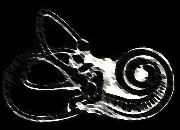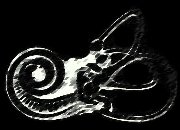References
So much is dependent upon good information. Evidence-based practice is of little use when based on poor evidence. Below is a compilation of trusted sources including peer-reviewed articles, websites and textbooks. Click the citation for a short description of the resource. Please visit the contact page to pass along any resources you have found useful that you feel should be added to this list.
Baloh, R., & Honrubia, V. (2001). Clinical neurophysiology of the vestibular system. (3rd ed., Vol. 63). New York: Oxford University Press.
This has to be the best book about dizziness and balance out there. It was written by two brilliant physicians and is a wonderfully applicable treatment of the neurology of the vestibular system. It is part of the "Contemporary Neuroscience Series" (which abbreviated is CNS - very clever). This whole series is very detailed and very thorough. See also "The Neurology of Eye Movements" for another great book for vestibular clinicians in the CNS series.
Kim, J. S., Lee, H. (2009). Inner Ear Dysfunction Due to Vertebrobasilar Ischemic Stroke. Seminars in Neurology, 29(5), 534-540.
Review pending...
Lasslo, R. (1997). Theory of eye motion and neurological testing. Retrieved from http://cim.ucdavis.edu/eyes/version1/eyeText.htm
A brief accompaniment to the eye simulation application. This page provides concise information concerning the extraocular muscles including anatomy, innervation, and bedside testing.
Manto, M., et al. (2011). Consensus Paper: Roles of the Cerebellum in Motor Control - The Diversity of Ideas on Cerebellar Involvement in Movement. The Cerebellum.
An excellent review of the major motor functions of the cerebellum.
Merriam-Webster Medical Dictionary [Internet]. [Springfield (MA)]: Merriam-Webster, Incorporated; ©2003. Available from: http://www.nlm.nih.gov/medlineplus/mplusdictionary.html.
This is a free, online medical dictionary from a reputable source - Merriam-Webster via the National Library of Medicine (NLM). What is indispensible about this dictionary is the spoken pronunciation of most of the terms. This is a great way to ensure you sound as informed as you are.
Montgomery, T. (2013). The extraocular muscles. Retrieved from http://www.tedmontgomery.com/the_eye/eom.html
A brief, but very useful reference about the extraocular muscles.
NINDS Neuroleptic malignant syndrome information page. (2007, February 14). Retrieved from http://www.ninds.nih.gov/disorders/neuroleptic_syndrome/neuroleptic_syndrome.htm
Information from the National Institute of Neurological Disorders and Stroke.
NINDS Wallenberg's syndrome information page. (2007, February 15). Retrieved from http://tinyurl.com/mqjrund
Information from the National Institute of Neurological Disorders and Stroke about Wallenberg's Syndrome.
Norrving, B., Magnusson, M., & Holtas, S. (1995). Isolated acute vertigo in the elderly; vestibular or vascular disease? Acta Neurol Scand, 91(1), 43-48.
This study raises the issue that approximately 1/4 of patients presenting with isolated vertigo to Swedish emergency departments is likely due to vascular disease, as opposed to an easily misdiagnosed peripheral disorder.
O'Rourke, R. A. (1972). Clinical cardiology: The stokes-adams syndrome - definition and etiology; mechanisms and treatment. California Medicine, 117(1), 96-99. Retrieved from http://tinyurl.com/lh2hh8e
A nice treatment of the Stokes-Adams Syndrome. This is an older reference, but very thorough.
Pychiatric Nursing. (2012, April 14). Neuroleptic-induced extrapyramidal symptoms. Retrieved from http://nursingplanet.com/psychopharmacology/extrapyramidal_symptoms.html
Editors of this site publish handouts and informational webpages based on books and aricles related to psychiatry. This page is has good coverage of pyramidal symptoms.
Rosamond, W., Flegal, K., Furie, K., et al. (2008). Heart Disease and Stroke Statistics−−2008 Update : A Report From the American Heart Association Statistics Committee and Stroke Statistics Subcommittee. Circulation, 117, e25-e146.
The title says it all for this one.
Takeda, N., Morita, M., & Hasegawa, S., et al. (1993). Neuropharmacology of motion sickness and emesis. Acta Otolaryngol (Stockh), 510, 10-15.
An interesting look at the emetic center using rat analogs. The authors investigate receptors and neurotransmiters that can relay the emetic signal.
Understanding blood pressure readings. (2012, April 04). Retrieved from http://tinyurl.com/34kf568 (American Heart Association).
A webpage from the American Heart Association that gives a simple overview of the basics behind blood pressure and interpreting blood pressure measurements.
Young, P. A., Young, P. H., & Tolbert, D. (2008). Basic clinical neuroscience. (2nd ed.). Wolters-Kluwer Health: Philadelphia.
This book is a great introduction to clinical neuroscience - it is a straight-forward overview that is easy to read and has great illustrations. There are questions at the end of the chapters to test your comprehension. An excellent way to get started with neurology without the need for an existing background in the field.



